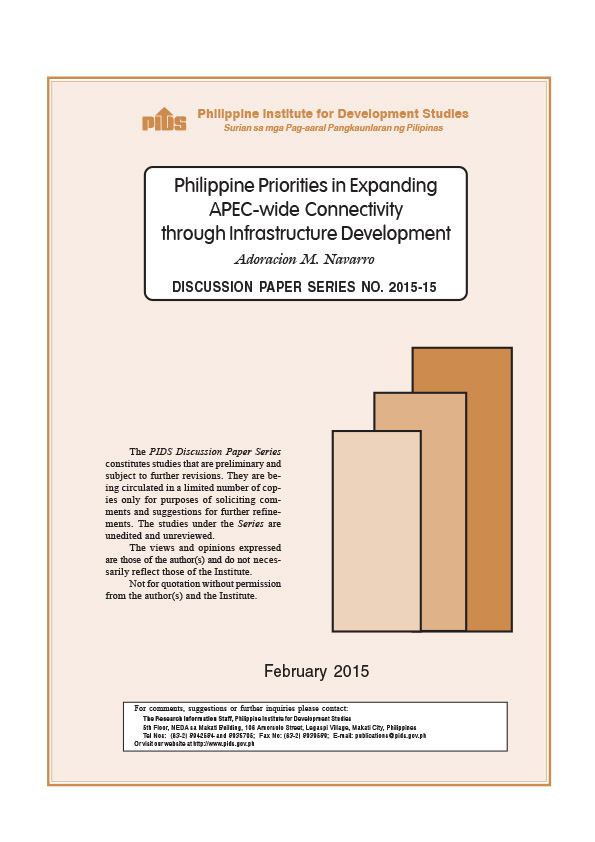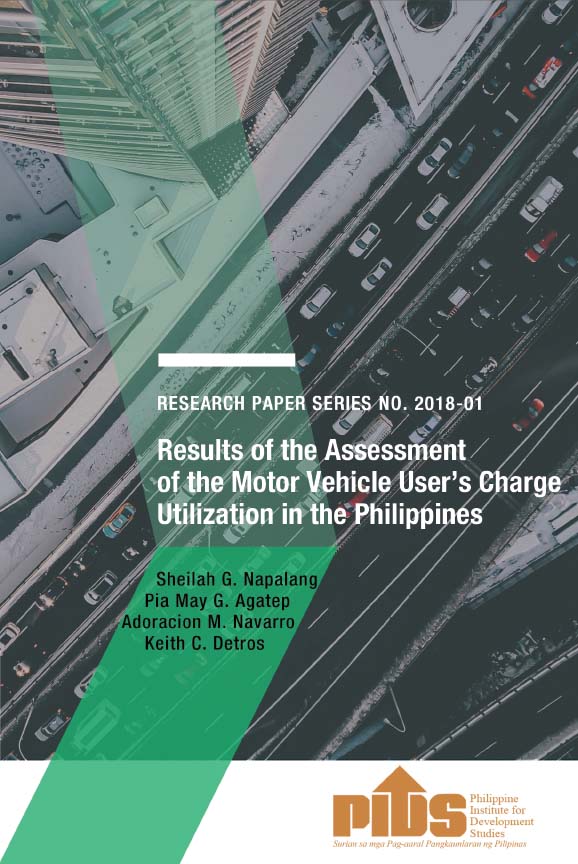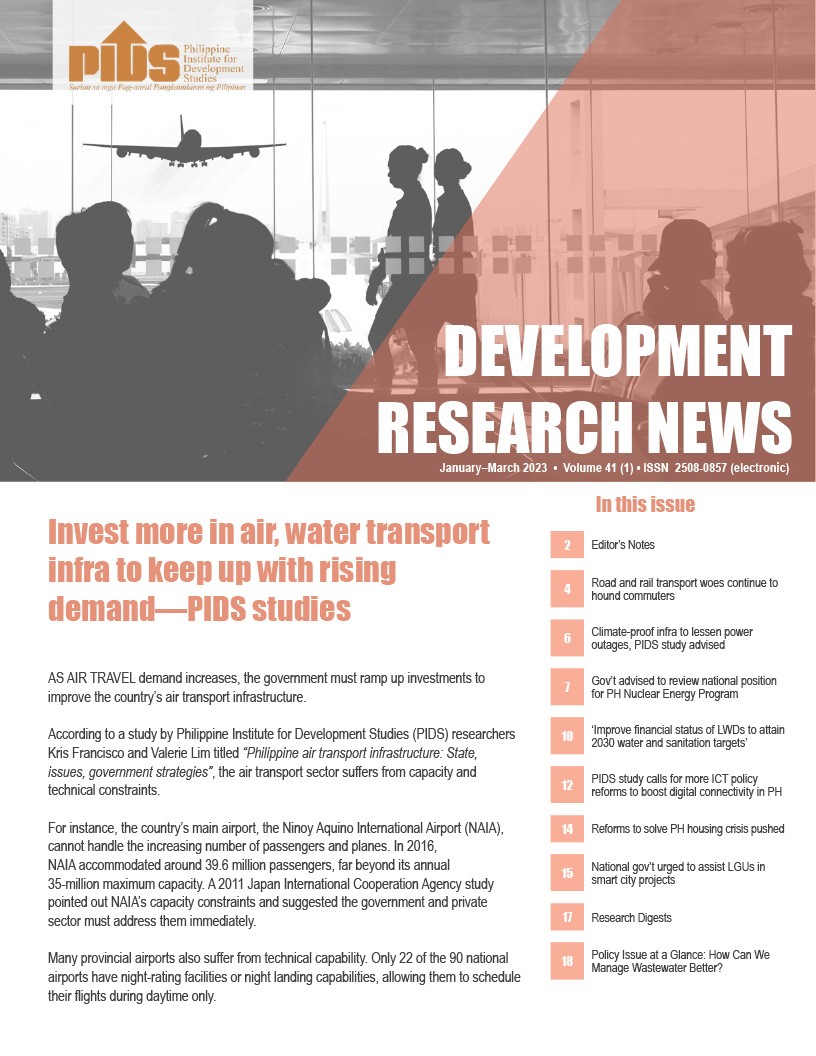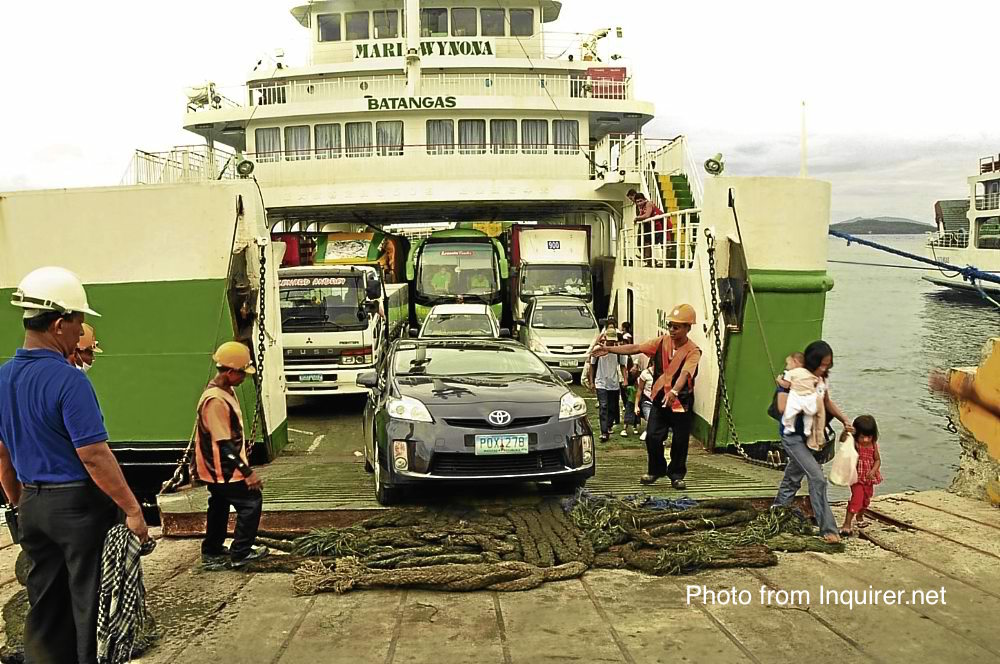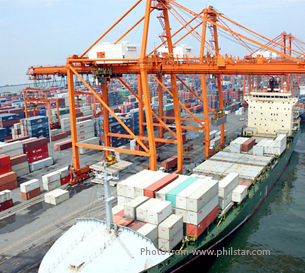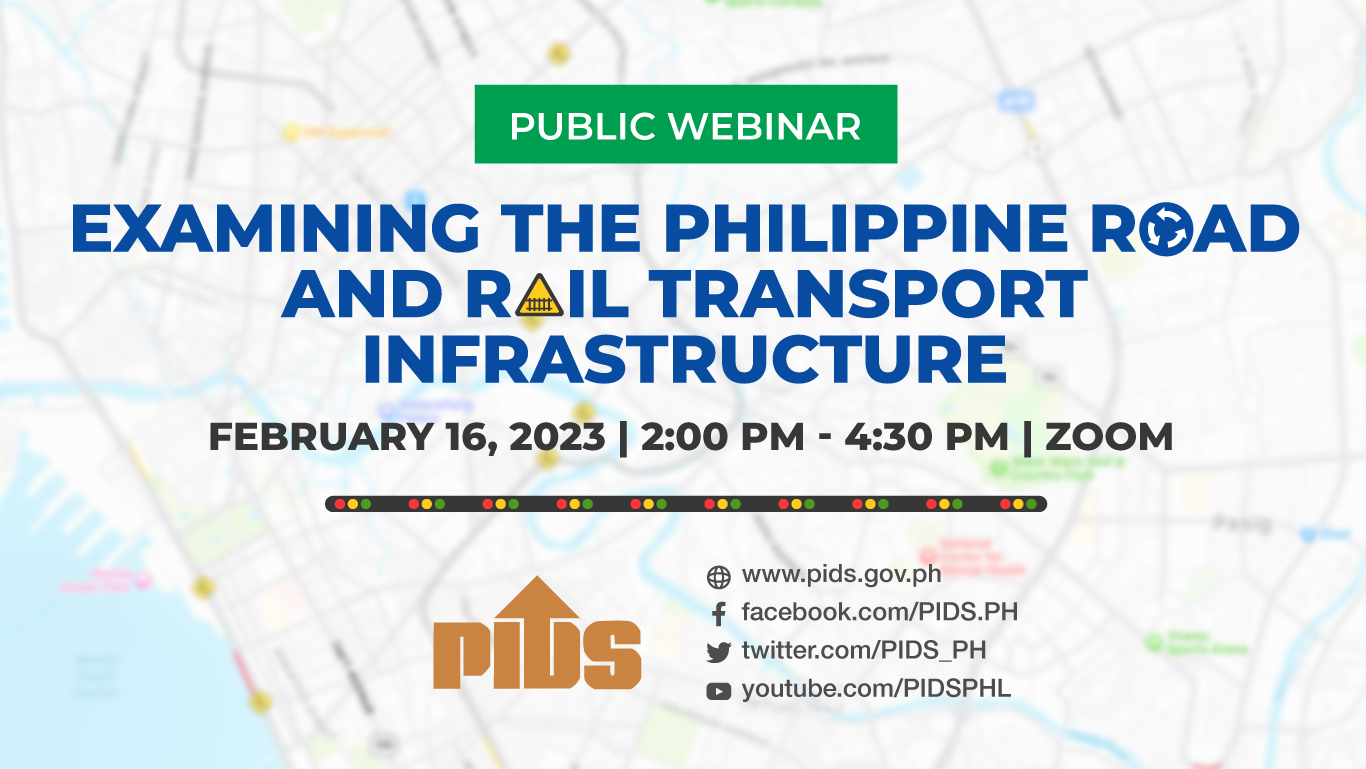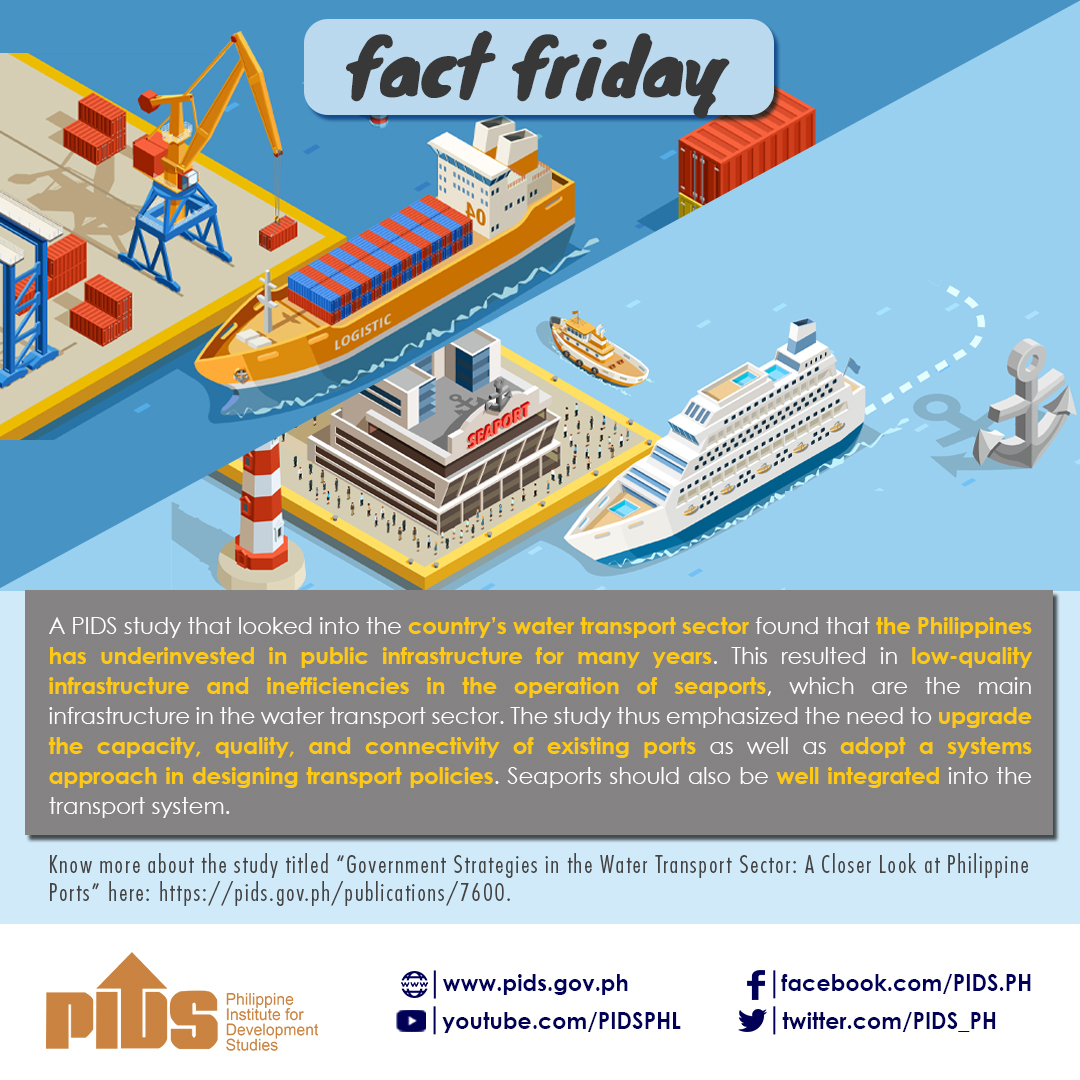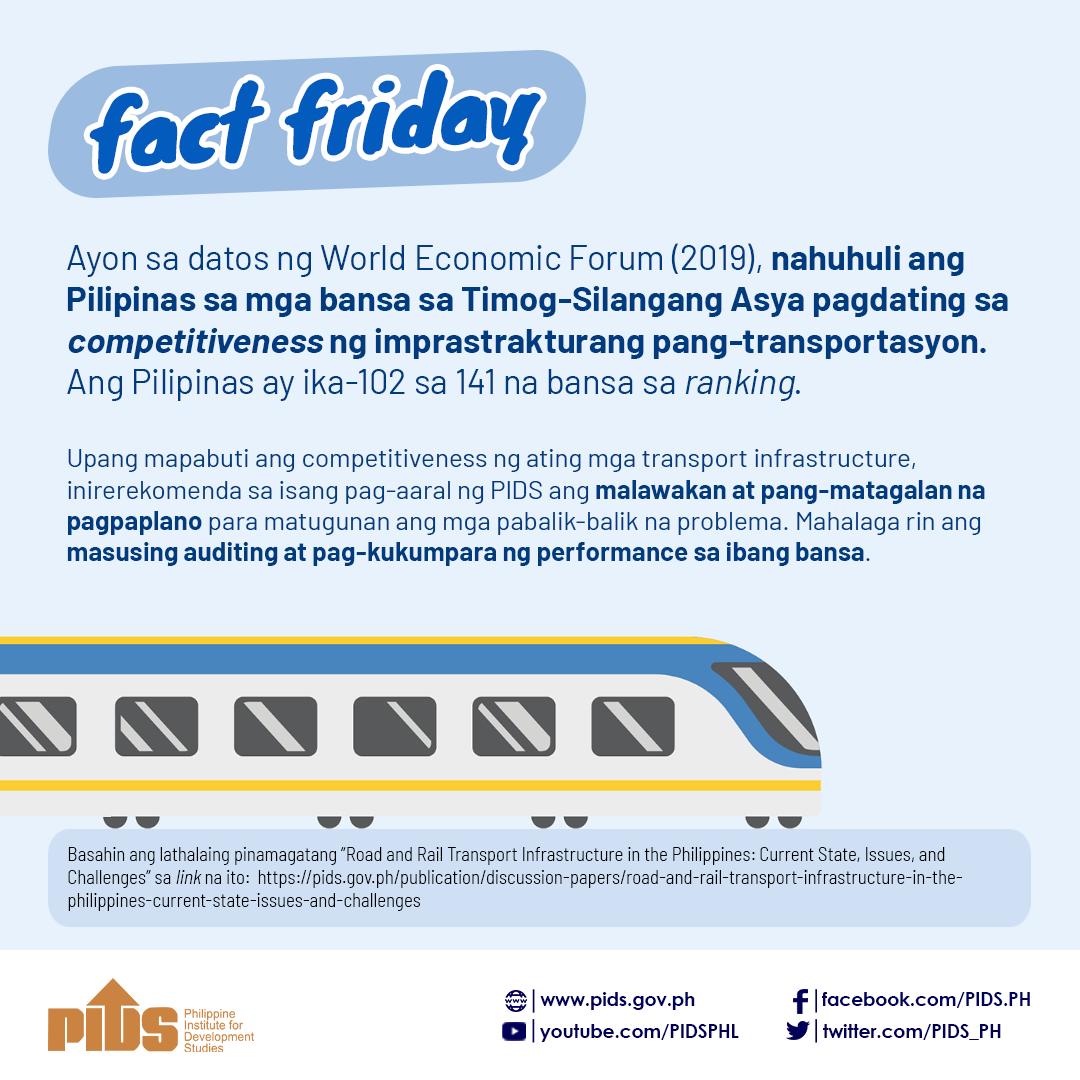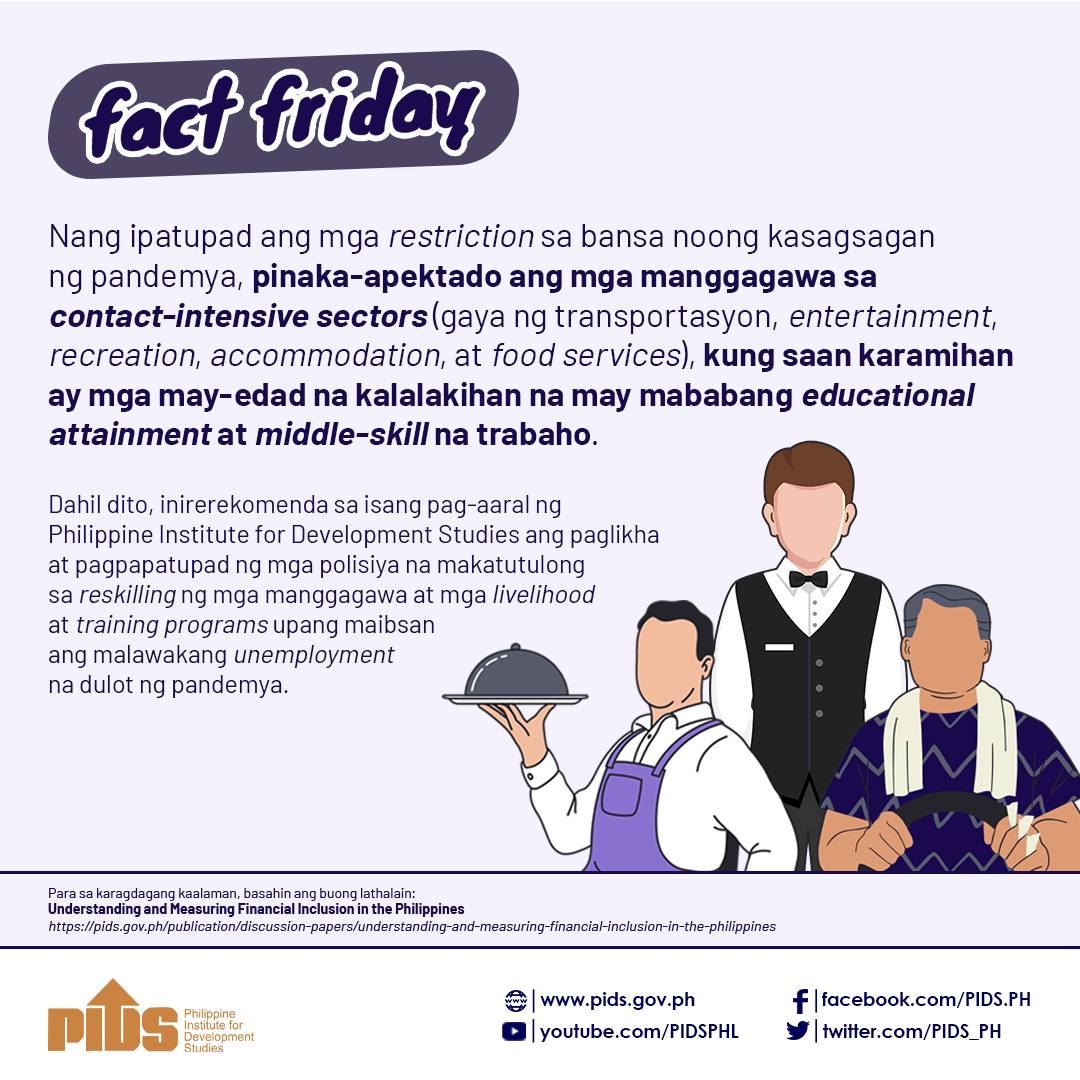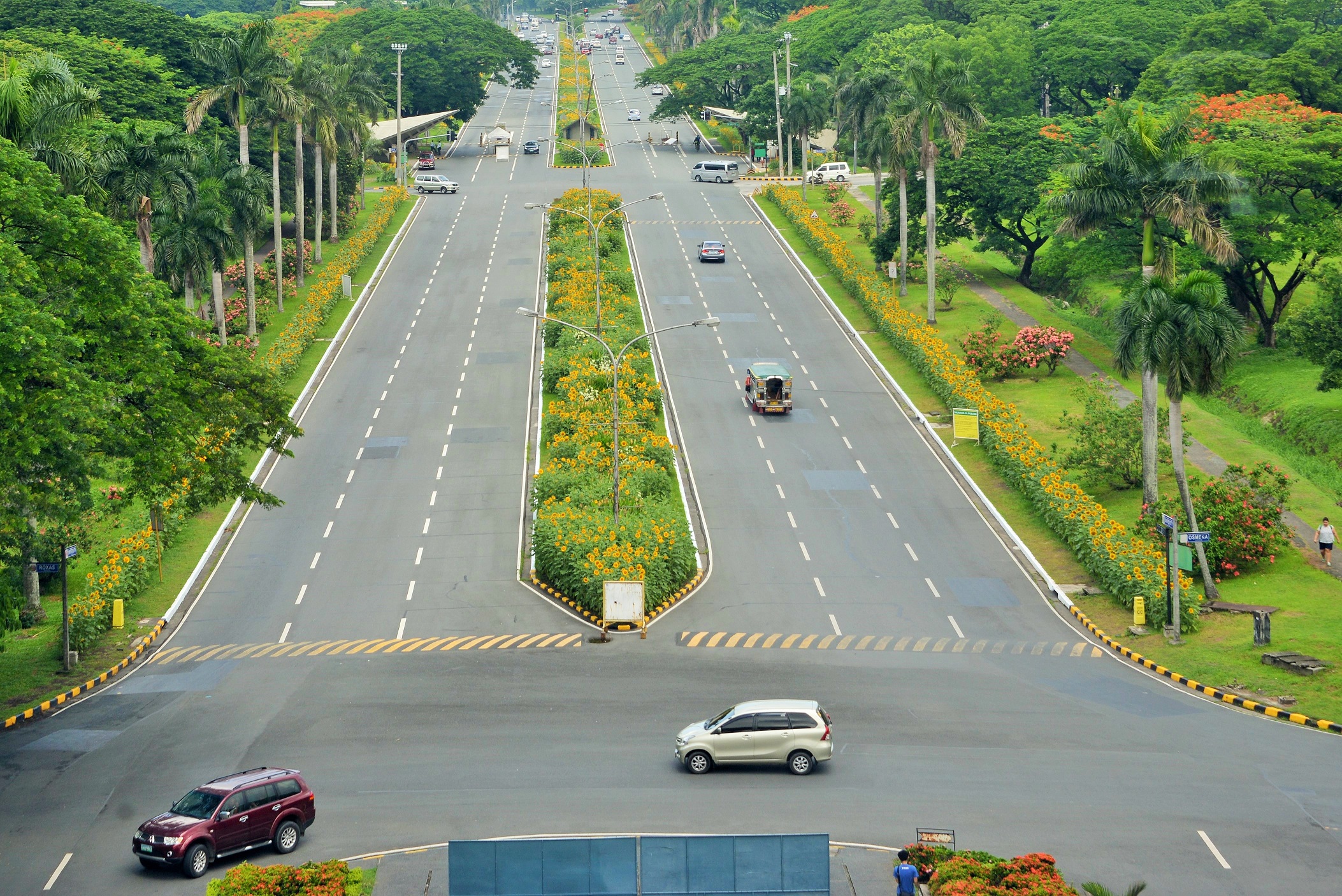
A study by state think tank Philippine Institute for Development Studies (PIDS) revealed that the funds collected through the motor vehicle users’ charge (MVUC), popularly known as road users' tax, is underutilized due to the lack of a definitive operating procedure system on how to identify and prioritize projects.
The authors of the study--PIDS Consultants Sheilah Napalang and Pia May Agatep, PIDS Senior Research Fellow Adoracion Navarro, and Research Associate Keith Detros--underscored that the processes of identification, approval, and implementation of proposed projects are problematic.
"Project identification does not follow the prescribed procedures. The approach is bottom up, rather than top down, [thereby] failing to incorporate a network perspective of accident blackspots, and leading to projects that are not of the highest priority being approved and implemented," the authors explained.
The MVUC, which is imposed through the registration fees of vehicles and penalties for overloading and collected by the Land Transportation Office (LTO), is envisioned as a new source of funding to finance road maintenance and minimize air pollution. MVUC is considered the third biggest source of tax revenue for the government, contributing an additional 40 percent of available funds for maintenance of national roads.
According to Republic Act (RA) 8794, funds collected from the MVUC should be placed in four special accounts in the National Treasury: Special Road Support Fund (80%), Special Local Road Fund (5%), Special Vehicle Pollution Control Fund (7.5%) and Special Road Safety Fund (7.5 %). The tax forms the bulk of the annual motor vehicle registration.
The PIDS study pointed out that project approval and fund release under the Special Local Road Fund requires the prerogative of the city mayor, leaving the process open to politicking.
"Project implementation is, ideally, a coordinated effort among several government agencies and the Road Board. However, in reality, there is evidently a real potential of overlaps of functions, especially between the DPWH and the Road Board Secretariat," the authors added.
They also cited the lack of transparency, given the absence of a clear schedule for proposal submission and approval of the projects. They maintained that this setup leaves the process open to political interference.
Aside from underutilization, the study also enumerated potential sources of discrepancy in fund collection, such as for the funds deposited as General Fund, due to incorrect agency and transaction codes and the lack of a list of deposited collections.
To solve these problems, the PIDS study recommended that MVUC collection be automated to efficiently track collections and deposits.
"Implementing agencies should make the effort to adhere to RA 8794's Implementing Rules and Regulations, especially concerning the steps of proposing projects to the Central Office, and prioritizing selections using the Highway Development and management (HDM-4) model, which makes sure that the projects are economically viable and ascertains that road users benefit the most," the study suggested.
Similarly, the guidelines for identifying and prioritizing projects that will be funded through the Special Vehicle Pollution Control Fund should be approved and implemented.
To improve monitoring, the authors suggested that project proposals and current projects as well as those undertaken for the past five years be published online, thereby establishing a "clear timeline" following proposal to the final decision of the Road Board.
The study argued that institutionalizing impact evaluation and monitoring will help transparency issues, and, at the same time, improve the decisionmaking process. Using performance indicators during monitoring and evaluation of projects is highly encouraged as well.
The authors also enumerated further institutional reforms. They recommended setting up an oversight committee for the MVUC to ensure adherence to the RA 8794. Secondly, they encouraged the Road Board Secretary to focus their time on "monitoring and evaluation of project implementation and outcomes", and leave the procurement and project implementation to other agencies such as the Department of Public Works and Highways.
Lastly, the authors underscored capitalizing on the potential of a community-based labor approach on road maintenance. Highlighting the performance of Bantay Lansangan project and the details of the Road Sector Status Report Card, the authors suggested strengthening "community-based employment in road maintenance projects" and encouraging "the participation of civil society organizations in monitoring and increasing transparency in road projects.” ###
The authors of the study--PIDS Consultants Sheilah Napalang and Pia May Agatep, PIDS Senior Research Fellow Adoracion Navarro, and Research Associate Keith Detros--underscored that the processes of identification, approval, and implementation of proposed projects are problematic.
"Project identification does not follow the prescribed procedures. The approach is bottom up, rather than top down, [thereby] failing to incorporate a network perspective of accident blackspots, and leading to projects that are not of the highest priority being approved and implemented," the authors explained.
The MVUC, which is imposed through the registration fees of vehicles and penalties for overloading and collected by the Land Transportation Office (LTO), is envisioned as a new source of funding to finance road maintenance and minimize air pollution. MVUC is considered the third biggest source of tax revenue for the government, contributing an additional 40 percent of available funds for maintenance of national roads.
According to Republic Act (RA) 8794, funds collected from the MVUC should be placed in four special accounts in the National Treasury: Special Road Support Fund (80%), Special Local Road Fund (5%), Special Vehicle Pollution Control Fund (7.5%) and Special Road Safety Fund (7.5 %). The tax forms the bulk of the annual motor vehicle registration.
The PIDS study pointed out that project approval and fund release under the Special Local Road Fund requires the prerogative of the city mayor, leaving the process open to politicking.
"Project implementation is, ideally, a coordinated effort among several government agencies and the Road Board. However, in reality, there is evidently a real potential of overlaps of functions, especially between the DPWH and the Road Board Secretariat," the authors added.
They also cited the lack of transparency, given the absence of a clear schedule for proposal submission and approval of the projects. They maintained that this setup leaves the process open to political interference.
Aside from underutilization, the study also enumerated potential sources of discrepancy in fund collection, such as for the funds deposited as General Fund, due to incorrect agency and transaction codes and the lack of a list of deposited collections.
To solve these problems, the PIDS study recommended that MVUC collection be automated to efficiently track collections and deposits.
"Implementing agencies should make the effort to adhere to RA 8794's Implementing Rules and Regulations, especially concerning the steps of proposing projects to the Central Office, and prioritizing selections using the Highway Development and management (HDM-4) model, which makes sure that the projects are economically viable and ascertains that road users benefit the most," the study suggested.
Similarly, the guidelines for identifying and prioritizing projects that will be funded through the Special Vehicle Pollution Control Fund should be approved and implemented.
To improve monitoring, the authors suggested that project proposals and current projects as well as those undertaken for the past five years be published online, thereby establishing a "clear timeline" following proposal to the final decision of the Road Board.
The study argued that institutionalizing impact evaluation and monitoring will help transparency issues, and, at the same time, improve the decisionmaking process. Using performance indicators during monitoring and evaluation of projects is highly encouraged as well.
The authors also enumerated further institutional reforms. They recommended setting up an oversight committee for the MVUC to ensure adherence to the RA 8794. Secondly, they encouraged the Road Board Secretary to focus their time on "monitoring and evaluation of project implementation and outcomes", and leave the procurement and project implementation to other agencies such as the Department of Public Works and Highways.
Lastly, the authors underscored capitalizing on the potential of a community-based labor approach on road maintenance. Highlighting the performance of Bantay Lansangan project and the details of the Road Sector Status Report Card, the authors suggested strengthening "community-based employment in road maintenance projects" and encouraging "the participation of civil society organizations in monitoring and increasing transparency in road projects.” ###

